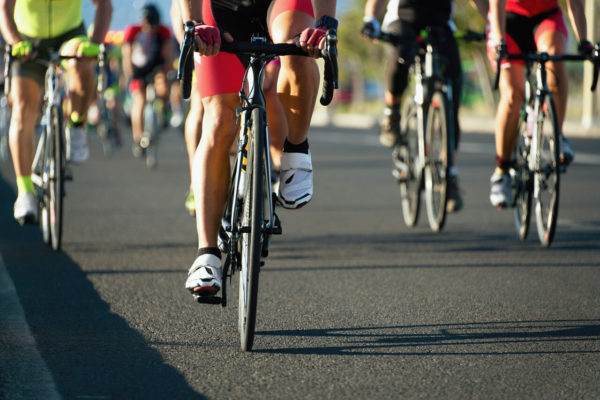Most athletes strive to push themselves to their physical limits—and sometimes beyond them—but it can be argued that triathletes are in a class all their own. Triathlons, which consist of a grueling combination of swimming, running, and cycling, are all-encompassing events that require the use of practically every part of the body. Training also tends to be equally intense, with many avid triathletes logging hundreds of miles total in these disciplines each month. It should come as no surprise, then, that triathlon injuries in New York City are quite common. These types of injuries can sideline triathletes and get in the way of their aggressive training regimens, but our physical therapists can provide the treatment and guidance needed to help them recover and get back on the saddle.
Triathlon participation rates vary from year to year, but more than 2 million individuals complete at least one triathlon on a consistent basis every year. There is also a great deal of variation in the distances of the events in each triathlon in order to accommodate all skill levels. These range from the shortest triathlon (the “sprint”), which usually consists of a 0.5-mile swim, 12.4-mile bike ride, and 3.1-mile run, to the Full Ironman, which features a 2.4-mile swim, 112-mile bike ride, 26.2-mile run (a full marathon).
The vast majority of triathlon-related injuries are classified as “overuse injuries,” which means the culprit is training too much or too hard without enough time to recover. In fact, one study found that in the six months leading up to a triathlon, 87% of participants reported experiencing some type of overuse injury. The primary issue here is that triathlon training repetitively stresses the muscles, tendons, and tissues around bones and joints, and this continuous stress produces small amounts of trauma (microtrauma) in these structures. The body can only do so much to keep up with this repetitive microtruama, and when it can’t repair all the damage done through training, the result is pain, weakness, and inflammation that are associated with an overuse injury.
Triathletes are subject to the wide array of overuse injuries that can occur in swimming, cycling, and running, but some injuries tend to crop up more frequently than others in this population. These include:
- Rotator cuff tendinitis: an inflammation of any of the tendons of the rotator cuff, this injury is typically due to repeatedly performing the freestyle swim stroke
- Iliotibial band syndrome: the iliotibial band, a large tendon that runs from the top of the hip to the top of the shinbone, can get irritated or inflamed from rubbing against the kneecap; increasing running mileage too quickly is usually the culprit
- Achilles tendinitis: the strongest and longest tendon of the body—the Achilles tendon—takes on a great deal of impact in triathlon training, and when it wears down from tight calves or too much training, the result is pain above the heel
- Patellar tendinitis: the tendon that connects the kneecap to the shinbone can also get inflamed, often from an improper bike fit or tight quadriceps muscles
- Stress fractures: these injuries, which are small fractures (usually in the feet), occur when increasing your training without taking enough time to recover
How our physical therapists can help with triathlon injuries in New York City
Addressing triathlon injuries is not as straightforward as the process usually is in single sports, as active triathletes are working out their entire bodies, and the cause of the injury may be difficult to single out. Treating these injuries requires an intimate knowledge of each sport involved and the common injuries that may be seen in them, which is something we happen to pride ourselves on here at Dynamic Sports Physical Therapy. For triathlon injuries in New York City, we can provide the following:
- An assessment of your swim stroke, running form, bike, and cycling position; if any of these components are out of balance, it may be contributing to your injury or pain, and we will work with you to identify the issue and correct it
- Advice on training duration and intensity, with a particular focus on avoiding drastic changes in your training program, which is often associated with overuse injuries
- One benefit of triathlon training is that—depending on the injury—if you can’t perform one sport, you may be able to compensate by spending extra time with the others
- Injury-specific treatment, which may include any of the following:
- Pain-relieving modalities like ice, heat, ultrasound
- Stretching exercises
- Strengthening exercises
- Sport-specific education and rehabilitation
- Manual (hands-on) therapy
Competing in triathlons and putting in the training time needed to excel is a serious undertaking that comes with plenty of payoffs, but injuries are unfortunately a part of the whole bag as well. Treating triathlon injuries in New York City requires the expertise and experience of professionals that understand why these injuries occur and how best to overcome them, which is something we have in abundance here at Dynamic Sports Physical Therapy. So if you’re currently dealing with any triathlon-related pain or soreness that’s holding you back from your training, we’d like to help you get back on track. Contact Dynamic Sports Physical Therapy at 212-317-8303 to schedule an appointment today, or click here for more information on common triathlon injuries.

